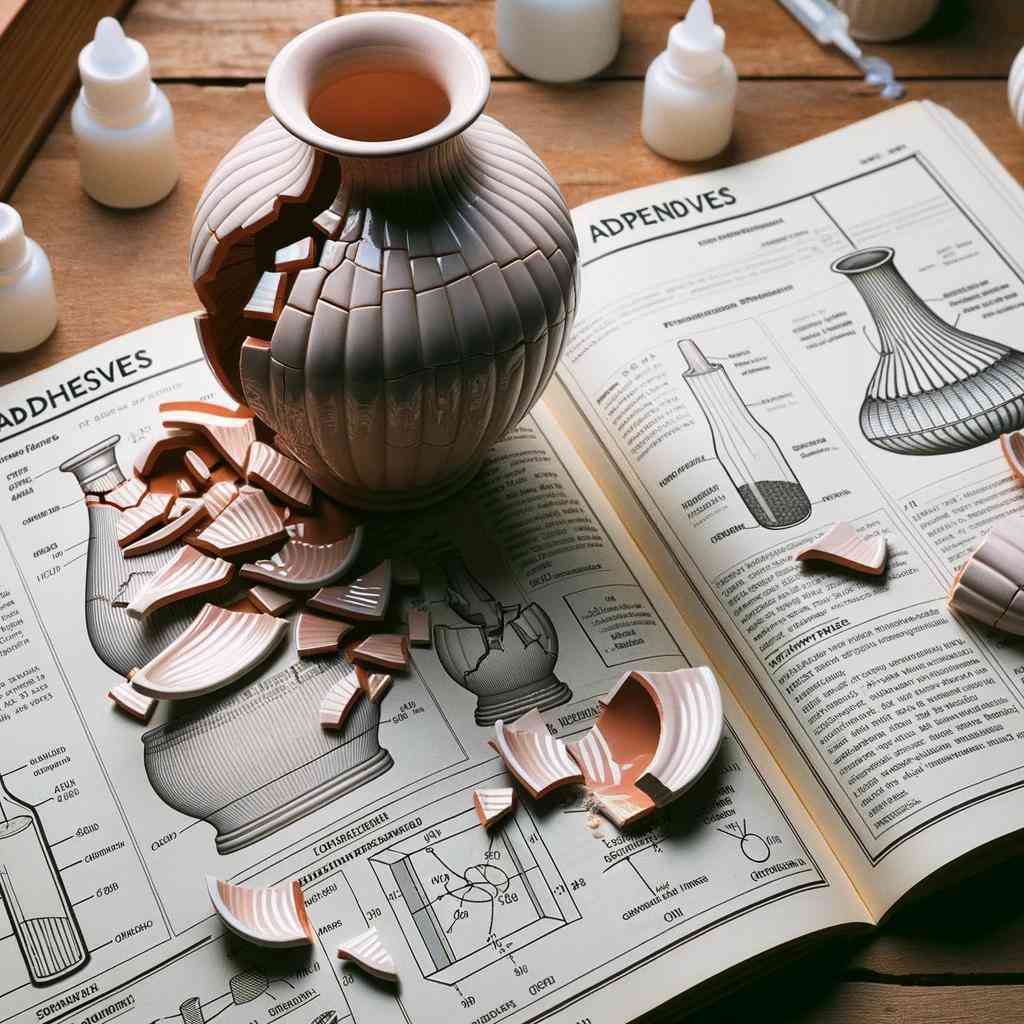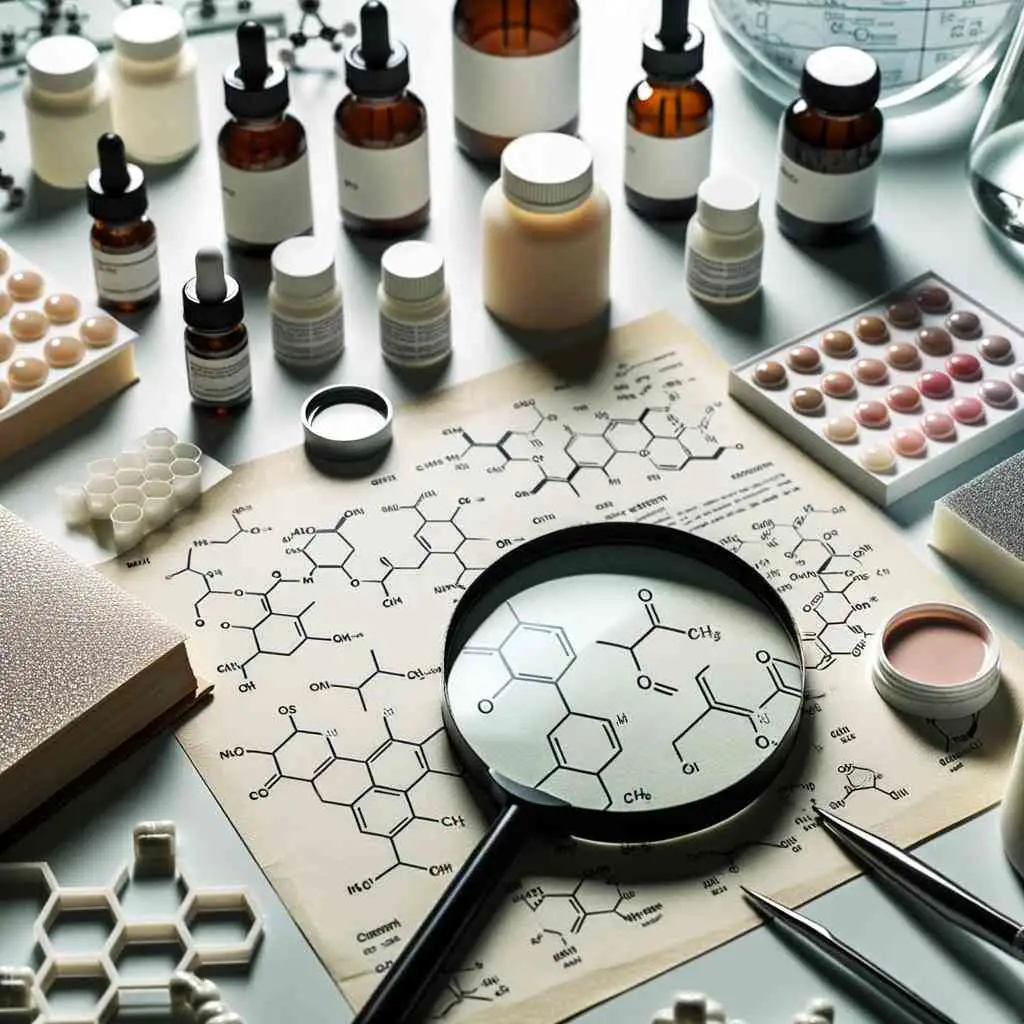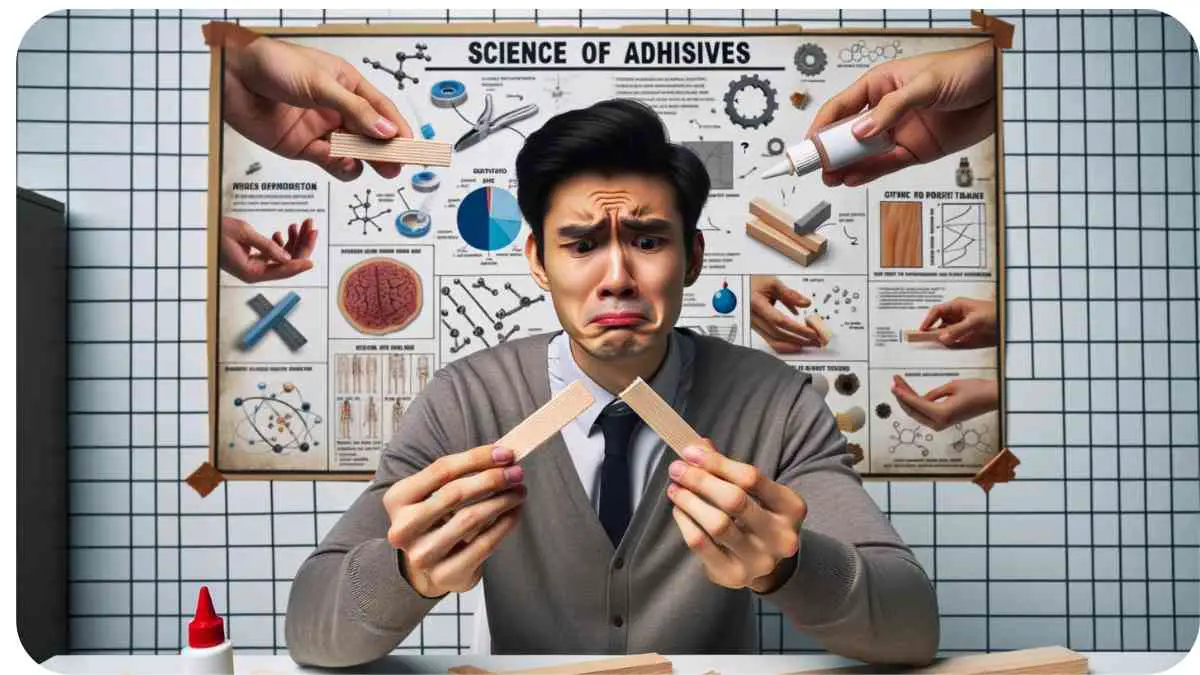Welcome to the world of adhesives, where the power of sticking things together is both a science and an art. Whether you’re a DIY enthusiast or a professional in manufacturing, understanding adhesives is crucial for successful bonding.
In this article, we’ll delve deep into the realm of adhesives, exploring why your glue might not be sticking as expected and how to overcome common challenges.
| Key Takeaways |
|---|
| 1. Inadequate surface preparation can lead to adhesive failure. |
| 2. Choosing the wrong adhesive for your materials can result in poor bonding. |
| 3. Environmental conditions, such as temperature and humidity, affect adhesive performance. |
| 4. Proper pressure and curing time are essential for strong adhesive bonds. |
| 5. Excess adhesive can interfere with the bonding process and should be avoided. |
| 6. Bonding dissimilar materials requires special considerations and adhesives. |
| 7. Adhesive failure can occur due to contaminants on the substrate. |
| 8. Compatibility between the adhesive and substrate is crucial for successful bonding. |
| 9. Controlling humidity levels is vital when working with certain adhesives. |
| 10. Adhesive cure time varies and should be matched to your project’s needs. |
| 11. Proper joint design can significantly impact the strength of the adhesive bond. |
| 12. Understanding adhesive testing methods helps ensure bond reliability. |
2. The Importance of Choosing the Right Adhesive
Choosing the right adhesive can be a game-changer. It’s not a one-size-fits-all scenario. The adhesive you pick should be tailored to the specific materials you’re bonding, the environmental conditions, and the desired bond strength. Let’s explore the various types of adhesives available.
Discover the secrets of adhesive performance with our comprehensive guide on Understanding Adhesives. Explore why glue may not be sticking as expected and how to improve results.”
3. Types of Adhesives

Adhesives come in various formulations, each with its unique properties and applications. Here are some common types:
3.1. Cyanoacrylate Adhesives
Cyanoacrylate adhesives, often known as “super glue,” are quick-bonding and ideal for small, precise applications. They form strong bonds on a wide range of materials.
Table 1: Comparison of Cyanoacrylate Adhesives
| Brand | Bonding Time | Material Compatibility | Strength |
| Aica Kogyo Co..Ltd | 10 seconds | Metals, Plastics | High |
| Arkema Group | 5 seconds | Wood, Rubber | Medium |
| H.B. Fuller Company | 15 seconds | Glass, Ceramics | High |
3.2. Epoxy Adhesives
Epoxy adhesives are versatile and offer excellent bonding strength. They are commonly used in the construction and automotive industries.
3.3. Polyurethane Adhesives
Polyurethane adhesives are known for their flexibility and resistance to moisture. They are commonly used in woodworking and construction.
Looking for funding opportunities in health tech? The UNICEF Venture Fund Award offers $100k equity-free funding for startups, driving innovation in the health technology sector
3.4. Contact Adhesives
Contact adhesives are great for large surface bonding and are commonly used in the furniture and automotive industries.
3.5. Hot Melt Adhesives
Hot melt adhesives are thermoplastic and widely used in packaging and textiles for their fast bonding capabilities.
4. Factors Affecting Adhesive Performance

The effectiveness of an adhesive depends on various factors that can significantly impact the bond. Let’s take a closer look at these factors:
In the realm of poetry and literature, emerging voices can find their golden opportunity with the $1,500 Evaristo Prize for African Poetry. Submit your work and shine as a poet.
4.1. Surface Preparation
Table 6: Surface Preparation Tips
| Factor | Importance | Recommendations |
| Cleanliness | High | Remove grease, dust, and contaminants. |
| Roughness | Medium | Create a rough surface for better adhesion. |
| Surface Activation | Low | Use primers for certain materials. |
| Adhesive Compatibility | High | Ensure the adhesive matches the substrate. |
4.2. Temperature and Humidity
Table 7: Effects of Temperature and Humidity
| Condition | Effect on Adhesive | Recommendations |
| High Temperature | Accelerates cure | Adjust working time accordingly. |
| Low Temperature | Slows cure | Use heated curing methods if needed. |
| High Humidity | May affect bonding | Control humidity levels in the workspace. |
| Low Humidity | May cause drying | Keep adhesive containers tightly closed. |
4.3. Substrate Materials
Table 8: Substrate Material Compatibility
| Material | Adhesive Compatibility | Recommendations |
| Metals | Most adhesives | Clean and roughen metal surfaces. |
| Plastics | Varies | Choose adhesives designed for plastics. |
| Wood | Wide selection | Consider wood type and moisture content. |
| Glass | Specialized adhesives | Use UV-cured or clear epoxy for glass. |
4.4. Cure Time
Table 9: Factors Affecting Cure Time
| Factor | Impact on Cure Time | Recommendations |
| Temperature | Higher temperature | Use curing ovens or lamps for quicker cure. |
| Adhesive Thickness | Thicker adhesive | Extend cure time or use faster-curing adhesives. |
| Humidity | Higher humidity | Consider humidity-controlled curing chambers. |
| Catalysts | Catalyst presence | Use catalysts for accelerative curing. |
4.5. Joint Design
Are you an agri-business innovator? Participate in the Agri-Business Innovation Challenge for a chance to win a $16,000 equity-free grant to support your groundbreaking ideas.
Table 10: Joint Design Considerations
| Joint Type | Recommended Adhesive | Best Practices |
| Lap Joint | Epoxy, Polyurethane | Ensure proper overlap and adhesive coverage. |
| Butt Joint | Cyanoacrylate | Bond with adequate pressure and minimal gap. |
| T-Joint | Contact Adhesive | Apply adhesive to both surfaces for uniformity. |
| Fillet Joint | Hot Melt Adhesive | Control adhesive bead size for strength. |
5. Tips for Successful Adhesive Bonding

Achieving a strong adhesive bond requires attention to detail and precision. Here are some practical tips:
5.1. Proper Surface Cleaning
Before applying adhesive, ensure that the surfaces to be bonded are thoroughly clean, free from dust, grease, or contaminants.
5.2. Choosing the Right Adhesive for the Job
Refer to the tables above to select the most suitable adhesive based on your materials and working conditions.
For those passionate about peacebuilding, the African Peacebuilding Network Individual Research Fellowships offer an opportunity to win up to $15,000 for research initiatives promoting peace and stability in Africa.
5.3. Using Adequate Pressure
Applying pressure while the adhesive cures ensures intimate contact between the surfaces, promoting a strong bond.
5.4. Controlling Temperature and Humidity
Maintain an optimal environment by adjusting temperature and humidity levels as needed for the chosen adhesive.
6. Common Adhesive Problems and Solutions
Even with the best intentions, adhesive bonding can sometimes go awry. Here are some common problems and how to address them:
6.1. Adhesive Failure
Table 11: Common Causes of Adhesive Failure
| Issue | Cause | Solutions |
| Poor Surface Prep | Contaminants or roughness | Re-clean or re-prepare surfaces. |
| Wrong Adhesive | Incompatibility with materials | Choose a more suitable adhesive. |
| Insufficient Cure | Not enough time or heat | Allow for proper curing time or temperature. |
| Improper Pressure | Insufficient or uneven pressure | Apply adequate, uniform pressure during bonding. |
6.2. Excess Adhesive
Table 12: Dealing with Excess Adhesive
| Issue | Cause | Solutions |
| Squeezing Out Excess | Too much adhesive applied | Use less adhesive or adjust application method. |
| Difficulty in Cleanup | Adhesive hard to remove | Utilize solvents or mechanical removal methods. |
6.3. Bonding Dissimilar Materials
Table 13: Tips for Bonding Dissimilar Materials
| Materials Combination | Challenges | Solutions |
| Metal to Plastic | Different thermal expansion | Use flexible adhesives or bonding agents. |
| Wood to Glass | Varying porosity | Pre-treat surfaces or use specialized adhesives. |
7. The Role of Adhesive Testing
Ensuring the reliability of adhesive bonds is paramount, especially in critical applications. Various tests can be conducted to assess bond strength and durability.
7.1. Peel Test
Table 14: Peel Test Standards
| Test Type | Standards | Key Parameters |
| T-Peel Test | ASTM D1876, ISO 11339 | Peel angle, peel rate |
| 180° Peel Test | ASTM D3330, ISO 29862 | Substrate, adhesive thickness |
7.2. Shear Test
Table 15: Shear Test Methods
| Test Type | Standards | Key Parameters |
| Lap Shear Test | ASTM D1002, ISO 4587 | Overlap length, adhesive area |
| Tensile Shear | ASTM D3163 | Substrate material |
7.3. Tensile Test
Table 16: Tensile Test Standards
| Test Type | Standards | Key Parameters |
| Tensile Test | ASTM D638, ISO 527 | Crosshead speed, gauge length |
| Climbing Drum Test | ASTM D1781 | Test temperature, drum size |
8. Adhesive Safety

Adhesive use requires adherence to safety protocols to protect both the user and the environment. Always consult the product’s safety data sheet (SDS) for specific information.
9. Environmental Considerations
With growing environmental concerns, it’s crucial to consider the impact of adhesive choices. Look for eco-friendly options and consider recycling or disposal methods.
10. Case Studies
Let’s explore real-world applications of adhesives in different industries:
10.1. Automotive Industry
Table 17: Adhesive Use in the Automotive Industry
| Application | Adhesive Type | Benefits |
| Bonding Panels | Epoxy | Weight reduction, corrosion resistance |
| Windshield Installation | Polyurethane | Structural strength, noise reduction |
10.2. Woodworking
Table 18: Adhesive Applications in Woodworking
| Application | Adhesive Type | Advantages |
| Furniture Assembly | Contact Adhesive | Fast bonding, no visible fasteners |
| Cabinet Construction | Wood Glue | Strong bonds, minimal clamping |
10.3. Electronics
Table 19: Adhesive Usage in Electronics
| Application | Adhesive Type | Benefits |
| Circuit Board Assembly | Epoxy | Electrical insulation, component stability |
| Smartphone Assembly | Cyanoacrylate | Precision bonding, quick cure |
10.4. Aerospace
Table 20: Adhesive Applications in Aerospace
| Application | Adhesive Type | Advantages |
| Aircraft Composite Bonding | Epoxy | Lightweight, high strength |
| Cabin Interior Assembly | Polyurethane | Flame resistance, durability |
11. The Future of Adhesives
As technology advances, adhesives will continue to evolve. Expect improvements in bonding techniques, materials, and sustainability.
12. Conclusion
Understanding adhesives is a journey through science, art, and innovation. With the right knowledge and selection, you can achieve bonds that hold strong in any situation. Remember to consider factors like material compatibility, surface preparation, and environmental impact. The adhesive you choose today might just be the glue that holds your future projects together.
In this article, we’ve explored the world of adhesives, from types and applications to common challenges and solutions. Armed with this knowledge, you can confidently tackle your bonding projects and ensure that your glue sticks where it matters most. Happy bonding!
Further Reading
12 Reasons Why the Glue Does Not Stick as It Should: Explore common reasons for adhesive failures and how to overcome them in this informative blog post.
Why Doesn’t Glue Stick to the Tube?: Discover the intriguing science behind why glue doesn’t stick to the inside of its container on this Quora discussion.
Adhesives: How Do They Work?: Delve into the world of adhesives and gain a deeper understanding of how they work and their various applications in this comprehensive article.
FAQs
Why is my glue not sticking properly?
There could be various reasons, including inadequate surface preparation, wrong adhesive choice, or improper environmental conditions. Refer to the article for detailed insights.
Can I use the same adhesive for different materials?
It depends on the compatibility of the adhesive with the specific materials. Some adhesives work well for a wide range of substrates, while others are more specialized.
How can I remove excess adhesive?
The method for removing excess adhesive depends on the type of adhesive used and the materials involved. Solvents, scraping, or mechanical methods may be necessary.
Are there eco-friendly adhesive options?
Yes, many eco-friendly adhesives are available today, designed to minimize environmental impact. Look for adhesives labeled as “green” or “sustainable.”
What is the future of adhesive technology?
The future of adhesives includes advancements in biodegradable adhesives, smart adhesives with sensors, and improved bonding techniques for various industries. Stay tuned for exciting developments.

Hellen James is the creator of Unified Crafts and has been crafting since she was a kid accompanied by her mom to the craft store, where she was free to choose whatever ignited her imagination.

